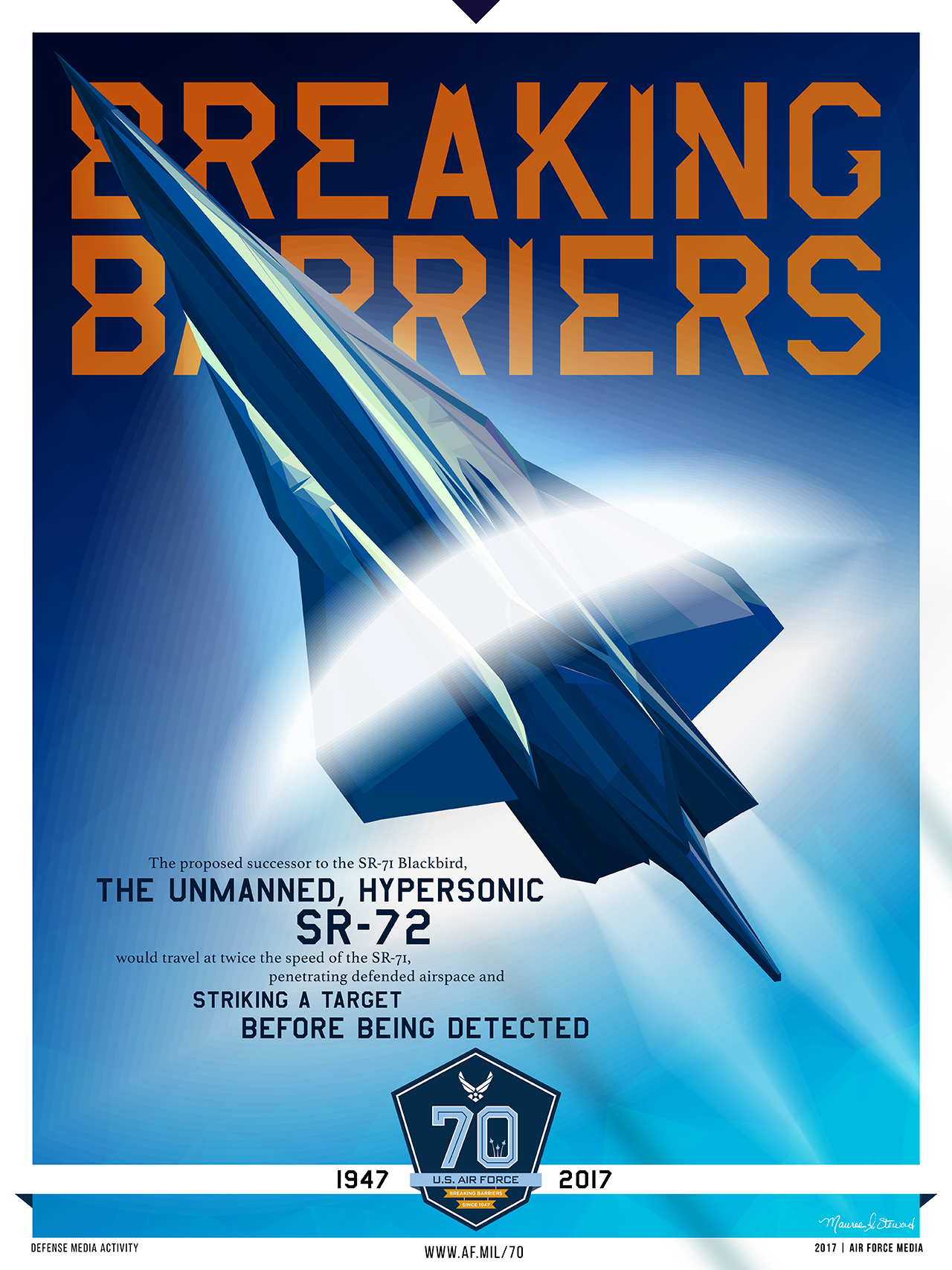The SR-71 Blackbird was so fast it outran every missile shoot against it and every interceptor scrambled to intercept it.
The aviation “side” of the Web went abuzz following the rumor that an SR-72 prototype was spotted performing flight tests at the U.S. Air Force’s Plant 42 at Palmdale, California.
Back in 2013, Lockheed Martin’s Skunk Works, the legendary division that designed airplanes which represented a giant leap for their times such as the F-104, the U-2, the Blackbird family or the F-117A stealth fighter jet, reveled the existence of a project for a Hypersonic strike aircraft dubbed SR-72.

The SR-72 is an unmanned hypersonic intelligence, surveillance and reconnaissance (ISR) and strike platform designed for Mach 6.
Based on the concept images released by the U.S. Air Force (the first official one can be found above) is coherent with the most recent hypersonic designs and it is quite similar to at least one of the configurations studied since the early ’60s for an SR-71 Blackbird replacement.
Anyway, regardless to whether an SR-72 prototype has already started flight testing somewhere between California and Nevada, the hypersonic strike aircraft will be able to fly about twice as fast as its predecessor, the iconic Mach 3 SR-71 Blackbird, one of the fastest planes ever flown operationally.

The Blackbird was the first aircraft to feature stealth capabilities: a special paint that contained iron ferrites and absorbed radar energy instead of returning it to the sender was used for SR-71’s wings, tail and fuselage. The reduced RCS (Radar Cross Section) made any reaction to an SR-71 overflight almost useless: the aircraft was so fast that once the radar detected it, the SAM battery’s guidance system was not able to compute the right parameters for a successful kill. Moreover, the range and bearing of the SR-71 was also denied to the enemy by jamming the radars with the use of the sophisticated electronic countermeasures (ECM) that equipped by the Blackbird.
However, in spite of its radar-evading features, what made the SR-71 almost impossible to intercept, were its incredible flight characteristics: it was able to fly at 3.5 Mach at 88,000 feet. The aircraft could climb higher than that and according to some sources the Blackbird could reach 120,000 feet and above. At that altitude, Soviet SAMs would have been unable to maneuver to hit an SR-71: the air is so thin that any maneuvering capability of a missile is practically nonexistent, as explained by the former Blackbird pilot Col. Richard H. Graham in his book “SR-71 The Complete Illustrated History of THE BLACKBIRD The World’s Highest , Fastest Plane.”
In 2012 a DARPA statement stated that America was gradually losing the “strategic advantage” that its stealth warplanes had long provided, as other countries’ stealth and counter-stealth capabilities continued to improve. For this reason, “speed is the new stealth” is a slogan that accompanied the unveiling of the SR-72 in 2013. However, the SR-71’s story is a proof that speed has always been the key to stealth.
Indeed, throughout its career, that came to an end on Oct. 9, 1999, no SR-71 was reportedly lost nor damaged due to hostile actions.
Not only did SAMs fail to catch the Blackbird but even the fastest Soviet fighter jets, including the MiG-31 Foxhound, lacked the necessary speed to reach the SR-71.

Here below you can find an excerpt from “MiG Pilot,” a book for Soviet pilot Viktor Belenko, who defected to Japan in a MiG-25 on Dec. 6, 1976, that we have already posted in the past. Here’s what Belenko recounts :
“American reconnaissance planes, SR-71s, were prowling off the coast, staying outside Soviet airspace by photographing terrain hundreds of miles inland with side – angle cameras. They taunted and toyed with the MiG-25s sent up to intercept them, scooting up to altitudes the Soviet planes could not reach, and circling leisurely above them or dashing off at speeds the Russians could not match.”
“[The Soviets] had a master plan to intercept an SR-71 by positioning a MiG-25 in front of it and one below it, and when the SR-71 passed they would fire missiles. But it never occurred. Soviet computers were very primitive, and there is no way that mission can be accomplished.”
“First of all, the SR-71 flies too high and too fast. The MiG-25 cannot reach it or catch it. Secondly…the missiles are useless above 27,000 meters [88,000 feet], and as you know, the SR-71 cruises much higher. But even if we could reach it, our missiles lack the velocity to overtake the SR-71 if they are fired in a tail chase. And if they are fired head-on, the guidance systems cannot adjust quickly enough to the high closing speed”.
As the above footage shows, NASA flew the Blackbird as well.
Four SR-71 airplanes operated from NASA Dryden during the 1990s. According to the Agency, two were used for research and two to support Air Force reactivation of the SR-71 for reconnaissance missions. Although the Air Force retired the Blackbirds in 1990, Congress reinstated funding for additional flights several years later. SR-71A (61-7980/NASA 844) arrived at Dryden on Feb. 15, 1990. It was placed into storage until 1992 and served as a research platform until its final flight on Oct. 9, 1999. SR-71A (61-7971/NASA 832) arrived at Dryden on March 19, 1990, but was returned to Air Force inventory as the first aircraft was reactivated in 1995. Along with SR-71A (61-7967), it was flown by NASA crews in support of the Air Force program. SR-71B (61-7956/NASA 831) arrived at Dryden on July 25, 1991, and served as a research platform as well as for crew training and proficiency until October 1997.










